Care of remontant strawberries in July after the first harvest
Post-harvest strawberry care is no less necessary for the culture than at other stages of the growing season. Summer residents should carry out top dressing, loosening, preventive treatment of plants and some other procedures. All this cannot be dispensed with when it comes to remontant varieties of garden strawberries. After the first wave of fruiting, plants need to recuperate for a new harvest.
Features of fruiting remontant strawberries
A feature of remontant varieties is the ability to give 2 harvest waves per season:
- The first berries can be obtained in June.
- Then the plants rest and bear fruit again in August.
Sometimes summer residents donate the first harvest so that the second is abundant and of high quality. They pick off the first buds so that the berry grower can retain the strength for fruiting at the end of summer. But not all gardeners do this. Many people feel sorry for depriving themselves of the first berries. Although there are few fruits on remontant strawberries in June, they are large, fragrant, and sweet.
After the berries are picked, you need to create conditions for the plants to recover. At the end of fruiting, the strawberry begins to actively grow leaves again, lay new flower stalks, throw away the mustache, so during this period, full dressing is especially important.
To make it less of the hassle associated with removing the mustache, loosening, watering, hilling, summer residents often cover the beds with strawberries with black film or agrotextile. Usually this procedure is carried out in the spring. If mulching material was not used, the first thing after picking the berries is to weed and loosen the beds, while sprinkling the bare roots of the bushes with earth.
Do I need to trim and remove the mustache?
Among individual summer residents, there is an opinion that the rapid growth of leaves in July takes away from the strawberries the strength necessary for future fruiting, so most of the foliage must be cut off. Gardeners believe that in this case, the plants will lay more peduncles. However, many disagree with this.
Through photosynthesis, the leaves nourish the plant, making it stronger. Pruning will weaken the bushes, which will not contribute to good flowering and fruiting at all. It is necessary to carefully examine the plants, and then remove only the old yellowed leaves at the bottom of the bush and those leaves on which there are suspicious spots. All plant debris left after trimming must be burned.
It is possible to partially remove healthy leaves only in case of excessive thickening of the bushes, because strawberries need good lighting for future fruiting.
Each plant should have at least 7–8 developed leaves in order to ensure the normal process of photosynthesis.
As for the mustache, only the very first ones are left. Once rooted, such rosettes will give an additional crop in the current season. Plants formed from subsequent whiskers will be able to bear fruit only next year. If you do not plan to lay a new bed of strawberries, all leafless processes, except for the very first ones, should be mercilessly removed.
Summer care after the first harvest
It is necessary to take care of remontant strawberries in July taking into account its condition and weather conditions. Experienced summer residents, by their appearance alone, understand what the cultivated crop needs.
Watering and loosening
Despite the fact that strawberries are in a state of relative rest after harvest, they still need moisture.The berry continues to be watered regularly.
If possible, it is better to install a drip irrigation system for strawberries. The kit may include moisture level sensors, in this case the gardener will be relieved of the need to monitor the irrigation frequency, everything will happen automatically.
When watering manually, you should avoid waterlogging:
- Strawberries are not watered during the rainy season.
- In hot and dry weather, watering should be done at least once every 2-3 days.
The bushes are watered with a moderate amount of warm water at the root (in the heat it is better to use sprinkling). Lack of moisture and the need for watering will be indicated by drooping, twisted strawberry leaves.
After watering or rain, the soil must be loosened, preventing a hard crust from forming on the surface. Loosening the soil facilitates the access of air and moisture to the roots, allows the plants to more efficiently assimilate fertilizing.
Care must be taken to ensure that the roots are not exposed as a result of erosion of the topsoil, otherwise this part of the root system will dry out and wither away. As soon as bare areas have appeared, the bushes are sprinkled with earth.
Fertilization
To feed the strawberries after the first harvest, various fertilizers containing nitrogen, phosphorus, potassium and essential trace elements are used. You can use both mineral complexes and organic substances, taking into account the composition of previous dressings:
- Strawberries respond well to the introduction of a peat-humus mixture. Both types of organic matter are taken in equal parts. For a garden with an area of 10 m2 you will need 20-25 kg of fertilizer.
- The introduction of azophoska at the rate of 1 tsp will help to ensure the growth of the leaf mass. on the bush. Fertilizer can be used dry. The granules are scattered into a shallow groove dug around the plant, sprinkled with earth and watered.
- You can saturate the soil with phosphorus and potassium using wood ash. It is sprinkled with a bed of strawberries, after which the soil is loosened. Ash consumption - 1.5 cups per 1 m2.
- On the basis of ash, you can prepare a solution with the addition of potassium permanganate and boric acid. First, 1 glass of ash is poured into 1 liter of hot water and allowed to cool. Then the solution is filtered, 2 g of potassium permanganate and the same amount of boric acid are added to it, mixed. Before use, the volume is brought up to 10 liters with water. The composition is used for watering at the root.
- You can use ammonia as a top dressing. It would be nice to add potassium humate to the ammonia solution. To prepare top dressing, add 2 tbsp to a bucket of water. l. ammonia and 50 g of potassium humate.
- Strawberries absorb liquid organic feed well. For example, slurry diluted with water in a ratio of 1: 3 or infusion of poultry droppings of low concentration (1:20).
- You can replace organic matter of animal origin with green fertilizer obtained from cut grass. The barrel is filled halfway with chopped weeds and topped up to the top of the water. The infusion should be fermented under a lid for 5-7 days. The contents of the container are stirred periodically. Before use, 1 part of the fertilizer is diluted with 5–7 parts of water.
- The use of superphosphate will help strengthen the roots. The solution is prepared from 2 tbsp. l. granules per 10 liters of water.
Mature bushes require higher doses of fertilizer compared to "first years". Up to 1 liter of nutrient solution is consumed per adult plant.
For feeding strawberries, it is prohibited to use fertilizers containing chlorine. The culture does not tolerate them.
Remontant strawberries should be fed every 7-10 days. Plants often lack boron on sandy soils, and zinc on acidic soils.
Disease prevention
Even with good care, strawberries are often exposed to all kinds of diseases and attacks of harmful insects. Modern insecticides can be used to treat common varieties of garden strawberries after fruiting. These remedies are effective and help to quickly cope with the problem.However, in the case of remontant strawberries, from which a re-harvest is expected, it is better not to use pesticides.
If the bushes show signs of damage, it is better to mow them completely and lay the strawberry beds in a new place. Fighting diseases and pests is also impractical for the reason that remontant varieties bear fruit no longer than 2-3 years.
In order to protect healthy plants from trouble, you can use preventive measures:
- Spray the bushes with a weak solution of potassium permanganate. You can also water the root of strawberries with this product.
- Dry mustard will help prevent the development of gray rot. To prepare a solution for 5 liters of water, 50 g of mustard powder is consumed. The water must be preheated. After the solution is infused for 2 days, its volume is brought to 10 liters with water. The composition is harmless and can be used during the ripening of the berries.
- The iodine solution, due to its disinfecting properties, perfectly copes with the destruction of fungal spores and scares away parasites. The composition for spraying is prepared from 10 liters of water and 15 drops of iodine. Such processing is permissible even during flowering.
- To protect the strawberries from slugs, you can sprinkle the ground under the plants with ground black pepper, sawdust or pine needles. These measures will prevent the clams from getting close to the bushes.
- In order to repel pests and prevent fungal diseases, the soil on a strawberry plantation can be sprinkled with wood ash.
If, after collecting the first wave of berries, signs of disease appear on the plants, treatment with 1% Bordeaux liquid is allowed, but this must be done before new peduncles appear.
By following the recommendations for caring for remontant strawberries in July, you can count on a full harvest in August. Of course, the formation of berries is also influenced by weather conditions, which a person cannot change, but everything that depends on the summer resident must be done.
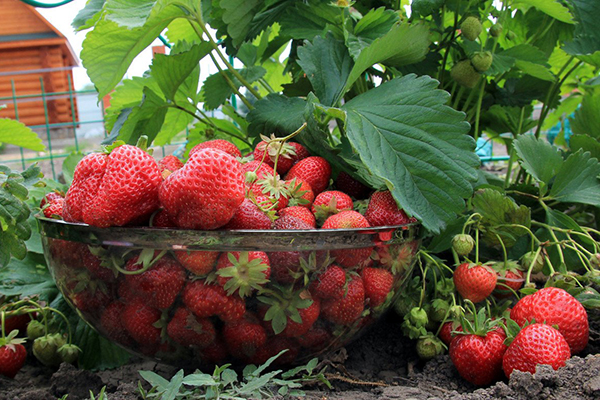
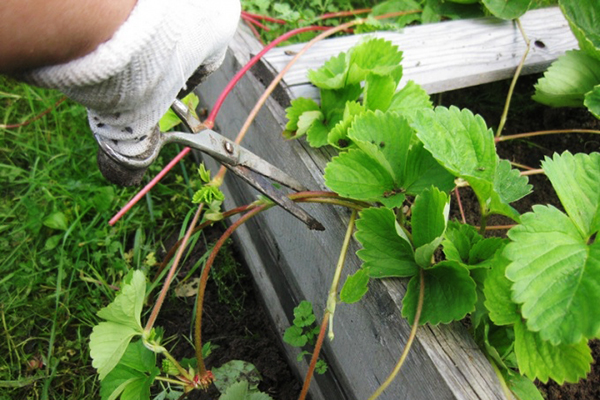

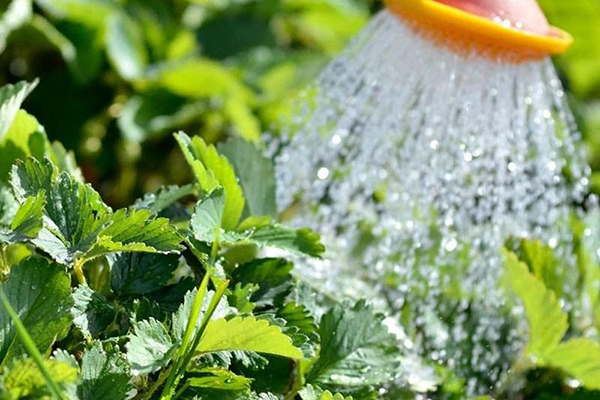


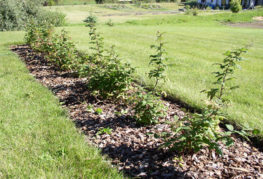
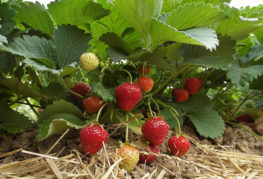
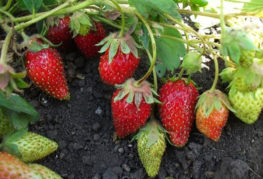
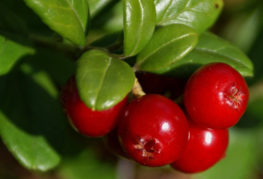
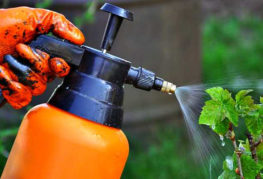
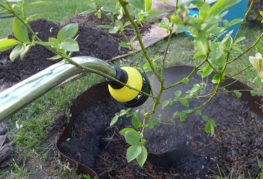
and will be published shortly.